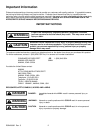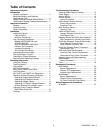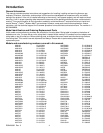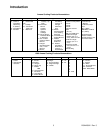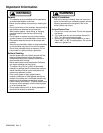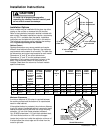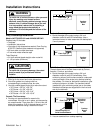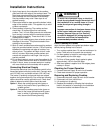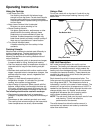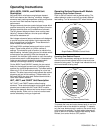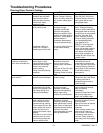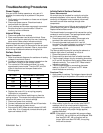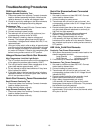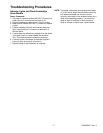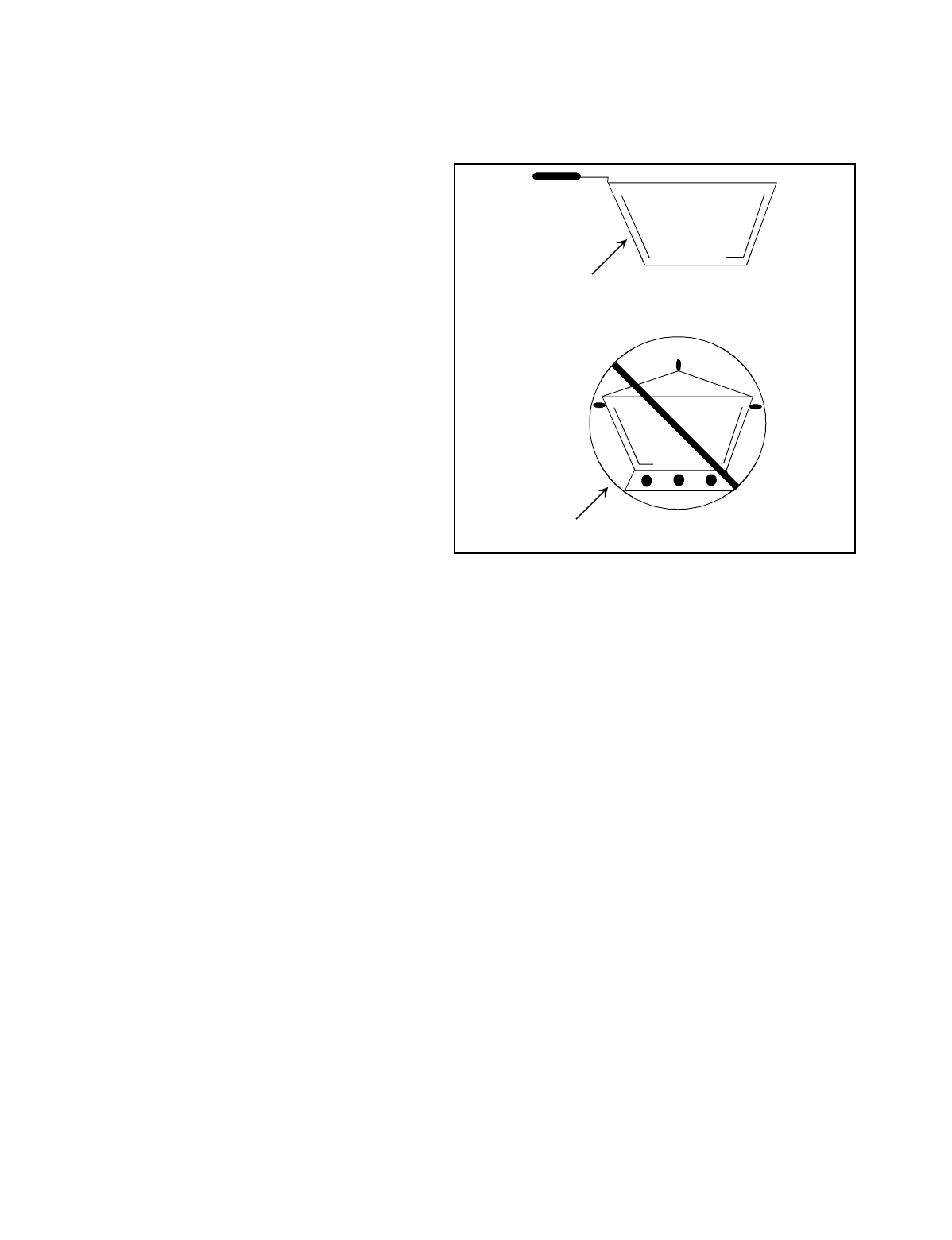
Operating Instructions
RS2420002 Rev. 5 10
Using the Cooktop
• Use Proper Pan Size
Use cooking utensils with flat bottoms large
enough to cover the flame. Correct-sized utensils
improve cooking efficiency and promotes safety.
Undersized utensils expose clothing and spillovers
to direct flame.
• Never Leave Surface Units Unattended
Boilovers can cause smoking or fire.
• Glazed Cooking Utensils
Use glass, glass/ceramic, earthenware or other
glazed utensils for cooking, although these
products are not recommended on glass top
cooktops. Sudden temperature changes may
break some utensils and easily scratch cooktop if
there are any imperfections in utensil bottom.
• Turn Utensil Handles Inward
A handle extending from the cooktop invites
accidents.
Cooking Utensils
Utensils made of different materials react differently to
cooking temperatures. The best results occur by
matching cooking utensil and cooking style. The
following list describes the cooking characteristics of
various materials.
• Aluminum responds quickly to temperature changes.
It responds best for frying, braising and roasting.
• Cast iron responds slowly to temperature changes. It
responds best for long low heat cooking and pan
frying.
• Stainless steel combined with another metal such as
copper, responds better to temperature changes. Use
stainless steel for soups, sauces, vegetables and
general cooking.
• Copper, tin-lined utensils respond quickly to
temperature changes. It is excellent for gourmet
cooking, wine sauces and egg dishes.
• Utensil design is important. Select utensils with flat
bottoms, straight sides, handle weight that does not
tilt the pan, and pans that match the burner size. Do
not use pans that exceed the diameter of the burner.
The following should not be used with cooktops.
• Glass/ceramic responds slowly to temperature
changes. It responds best to long and slow heating of
liquids.
• Enamelware is stain resistant porcelain over metal.
The cooking time varies according to the base metal.
Lower temperatures are usually recommended.
Using a Wok
Do not use a wok with a ring stand. A wok with a ring
stand does not allow proper cooking. Use only a flat
bottom wok.
Flat Bottom Wok
Ring Stand Wok
AKE Unit Description
AKE model cooktops feature four solid, cast iron
elements. The heating coils beneath the elements are
embedded in a insulated material, which protects the
heating coils from damage and wear. This construction
increases the elements durability. These elements are
controlled by push-to turn control knobs that permit an
infinite number of settings.
Each element has a built-in temperature limiter. The
limiter prevents the surface temperature of an element
from rising above 880°F. This temperature limiter is
indicated by a red dot in the center of each element. The
element will not get red hot (a temperature of 1000°F is
needed for the element to glow), although the dots color
changes slightly when it is heated. A low surface
temperature decreases the risk of warping and/or
melting down cookware that has boiled dry.
NOTE:
The red dot will fade over time as a result of use
and cleaning. This will not affect the
performance of the element.
The solid element has twice the surface area of a
conventional coil element and cooks by conduction
rather than radiant heat.



